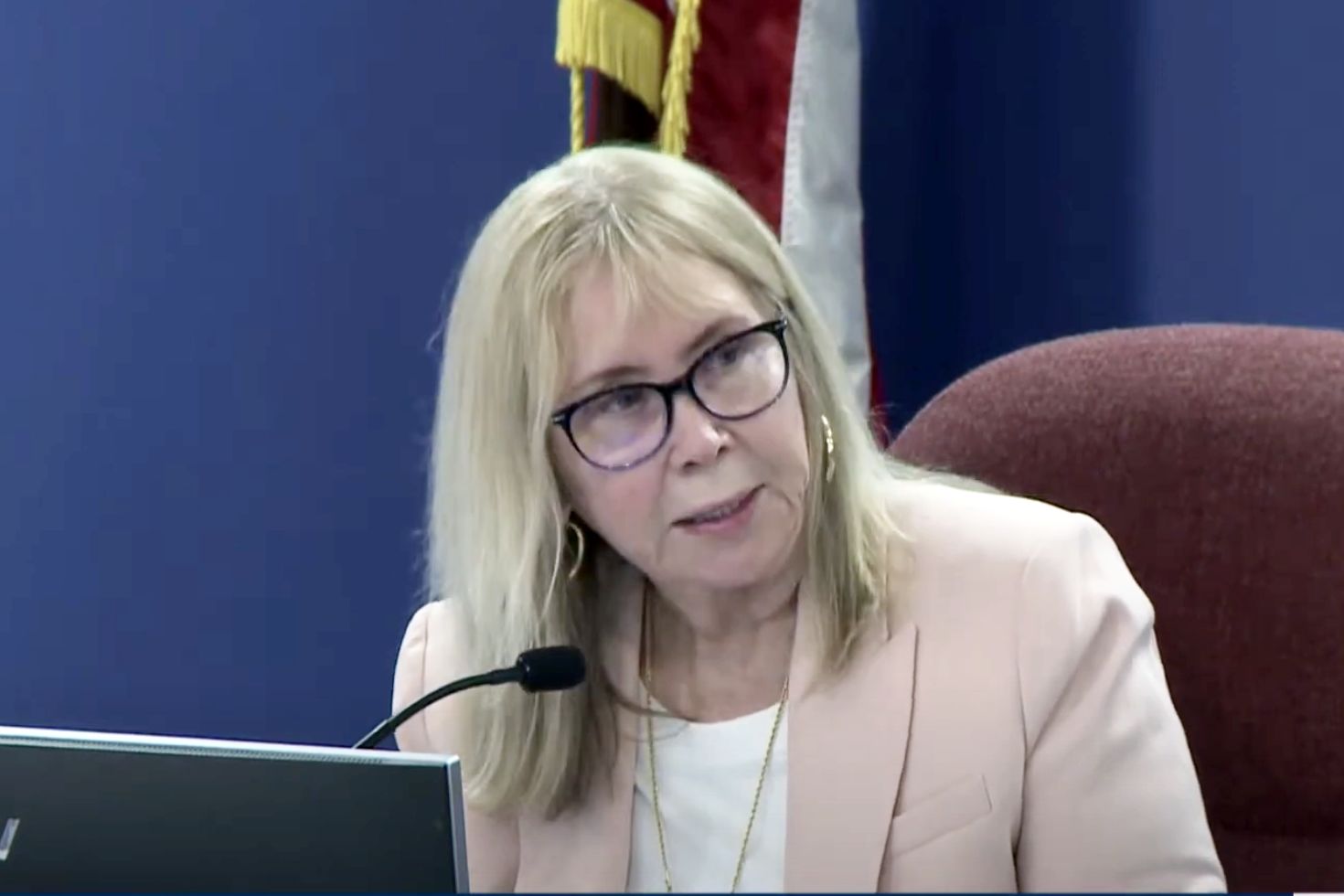The 2016 Green Arrow Awards
Not so long ago, going green often meant going broke. But as the winners of our inaugural Green Arrow Awards will attest, sustainability today is all about both doing good and doing well—a true win-win venture. Our eight winners are determined to conserve energy in meaningful ways. Their passion and innovative approaches to sustainability inspire their employees and the community and prove it is possible to invest in smart green features and still maintain a healthy bottom line.
The contest was rigorous. Companies had to provide evidence of their commitment to sustainability through energy conservation, employee engagement and outreach. Many thanks to our expert judges: Lee-Hayes Byron, Sarasota County’s sustainability manager; Manatee architect J.B. Taylor, who chairs the Manatee Chamber Green Business Council; and Jon Thaxton, senior vice president for community investment at the Gulf Coast Community Foundation.
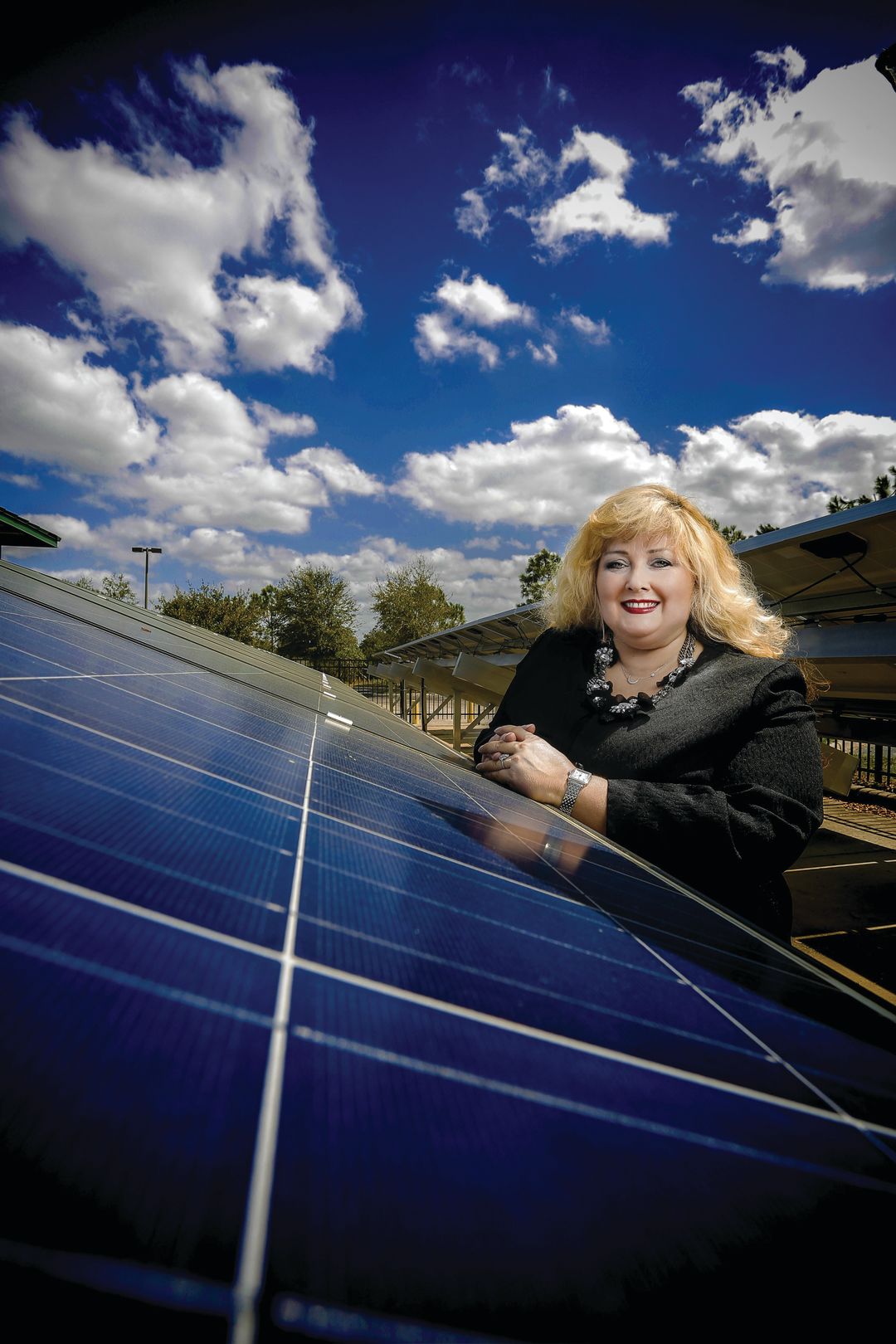
Everglades University vice president Caroline King.
Education Winner: Everglades University
At the Sarasota campus of Everglades University, every major, from aviation to international business, requires a course in sustainability. Undergraduates can earn degrees in alternative and renewable energy management, and most classes discuss LEED (Leadership in Energy & Environmental Design) certification. “All of our programs are about making the world a cleaner, healthier place,” says university vice president Caroline King.
Everglades occupies more than 20 acres bordered by Lake Osprey, near UTC mall. The university runs a wind turbine and a solar array on its roof, and conservation measures include re-use irrigation systems and timer lights in offices and classrooms. A commuter school, Everglades has partnered with the Florida Department of Transportation to encourage carpools and public transportation.
At the heart of campus is the Solar Education Center, an interactive teaching lab funded in part by Florida Power & Light. A website monitors the output (and offsets) of solar rooftop panels and solar trees that drivers can use to recharge smart cars. Classes use the lab, but the university also invites community and school groups to learn about this energy source. If you build it, they will come—from Richland County, S.C., for instance, where the K-12 school district is aiming to create its own solar lab along the Everglades model.
“We’re very career focused,” says King. “We’re looking to the jobs of the future—sustainability jobs, for sure.”
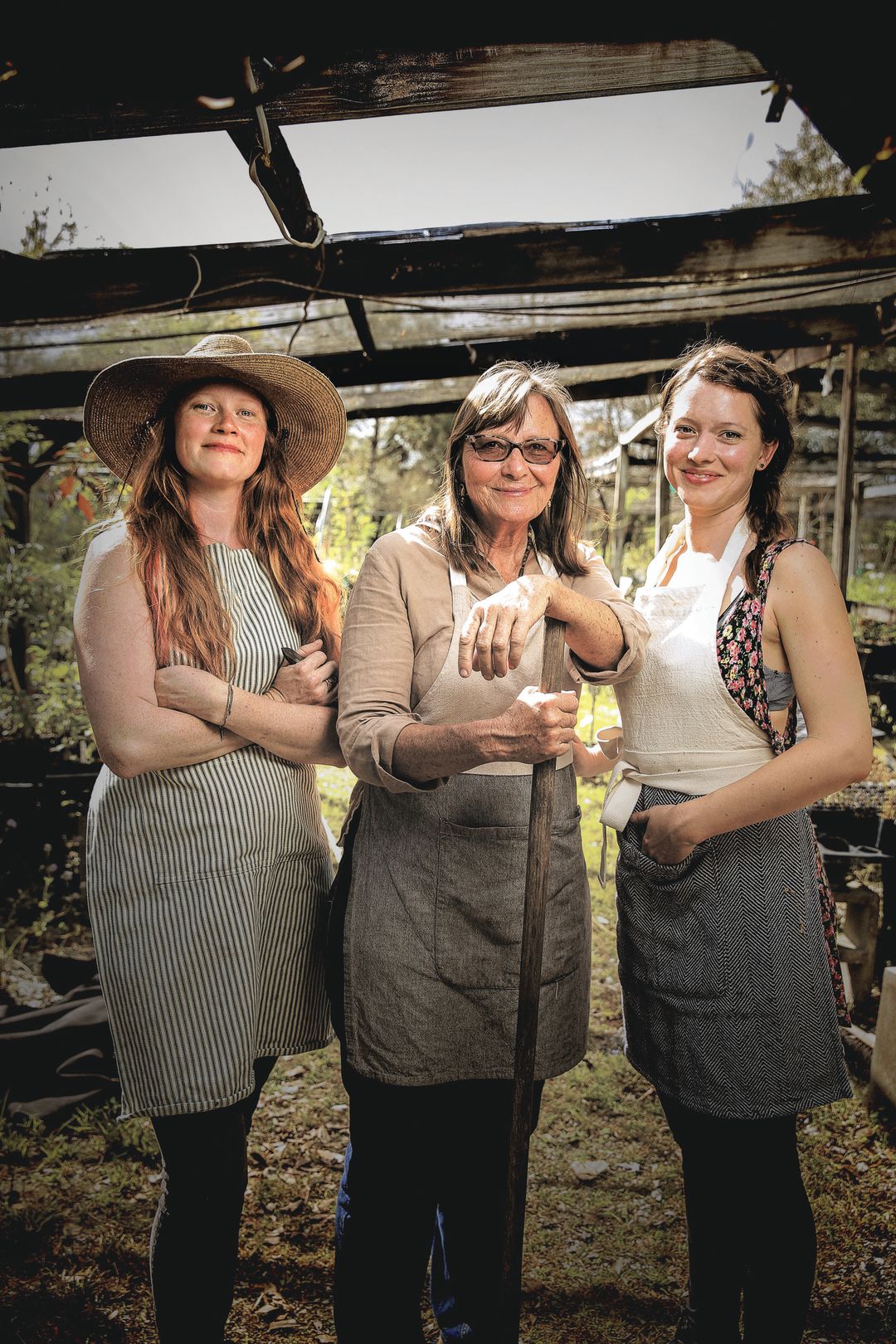
Laurel Schiller, center, with her daughters Annie Schiller and Rachel Andre.
Retail Winner: Florida Native Plants Nursery & Landscaping
Strangler figs and winged elm trees. Coral honeysuckle and passion flower vines. Purple prostrate porterweed and red blooming coral bean. As you might expect, Florida Native Plants Nursery & Landscaping, on Myakka Road in eastern Sarasota County, sells indigenous shrubs and trees. More importantly, for more than 30 years it has also sold an idea: that a natural landscape can be as beautiful as—and more delightful than—a yard full of finicky exotics.
Co-owner Laurel Schiller moved here from Chicago, but as a wildlife biologist, she came with a goal to create habitats and resting places for birds, bats, butterflies—all sorts of pollinators and fauna.
She discovered that the Florida “look” on postcards that delights so many out-of-state transplants depended on high-maintenance flora. “We introduce the public to plants that give a sense of place, conserve water, need no fertilizer and create a haven for wildlife,” Schiller says. “If you understand that a lovely firebush is going to attract hummingbirds, it adds to your enjoyment.”
To develop that appreciation, Schiller and fellow owner Fran Palmeri talk and write extensively. They’re educators at heart, with the nursery’s demonstration gardens and grounds as their classroom and a website as their lending library. To reach a younger generation, Schiller’s daughter has launched William’s Wildflowers, which creates eco-friendly floral arrangements for weddings and other events.
Retail education requires patience, Schiller says, since each new customer may be starting from scratch. “But everyone who comes through the gate is someone I want to know,” she says.

Jim Schell, general manager, Venice Golf and Country Club.
Golf Course and Country Club Winner: Venice Golf and Country Club
Jim Schell, general manager of the 587-home Venice Golf and Country Club, has always been concerned with the green stuff: money. And as long as “green everything cost twice as much,” he says, he couldn’t afford to be an environmentalist.
But the landscape has changed under his watch—and not just on the golf course, where the club restored wetlands, planted native vegetation and mulched trails with ground palm fronds as it participated in the Audubon Cooperative Sanctuary Program for Golf Courses.
When the club had to replace the hot water boiler in the kitchen, Schell discovered a zero-energy heat generator that vented hot air from the fridge and freezer to preheat water, slicing $600 a month off the electric bill. Heating the main pool and Jacuzzi with a geothermal pump saved another $300. A “demand control ventilation system with CO2 monitoring” now matches HVAC output to room occupancy, improving efficiency and air quality. A new irrigation system reduces water use by 40 percent.
Within three to five years, VGCC usually recoups its investment. Says Schell, “Sustainability has become the third leg of planning instead of a byproduct."
Schell speaks about the club’s sustainable practices to business and professional groups. The club has partnered with the county, the Southwest Florida Water Management District and the Florida Department of Environmental Protection, and last summer began collecting and storing stormwater runoff for irrigation, eliminating the need to pump or buy wastewater.
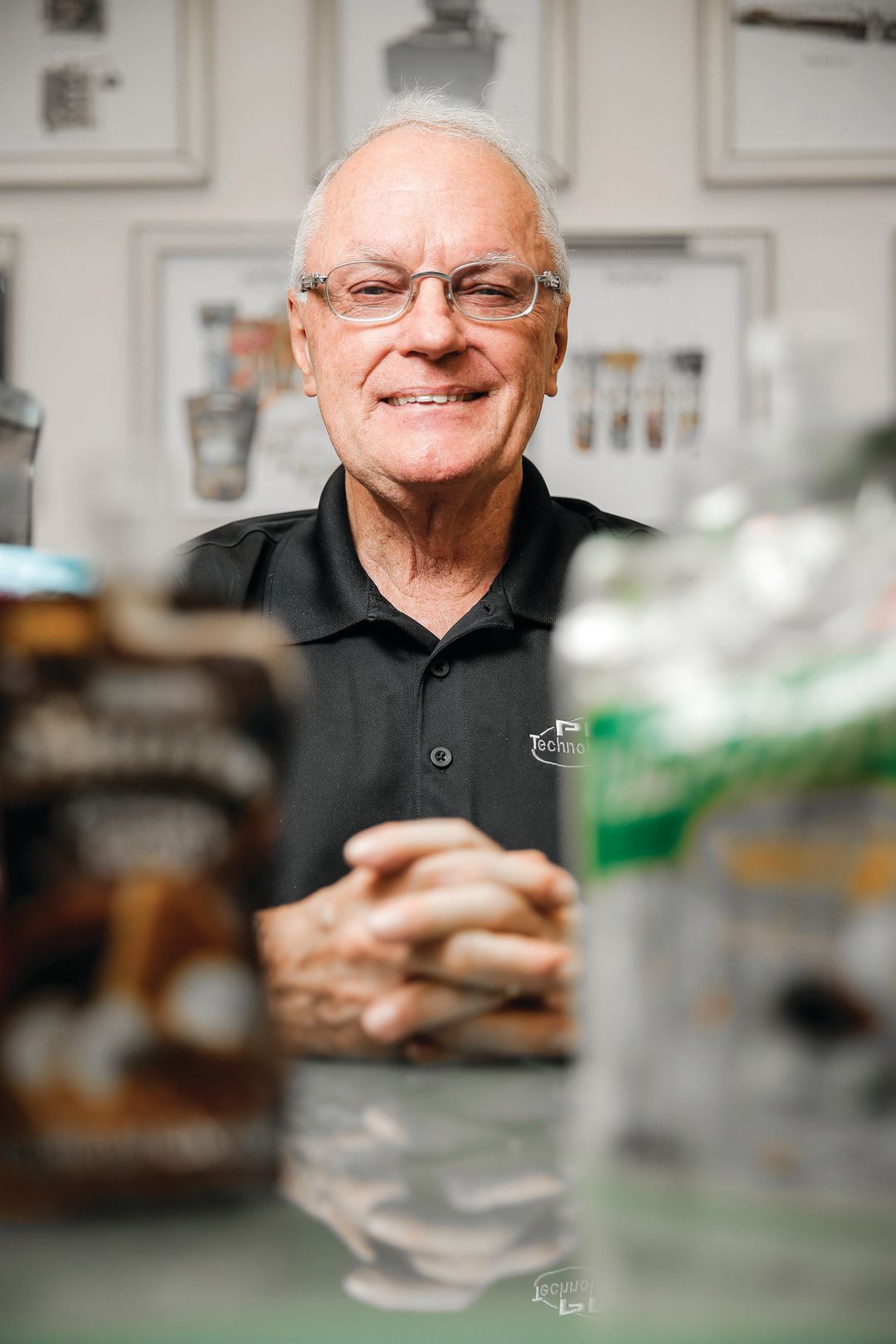
PPi CEO R. Charles Murray
Manufacturing Winner: PPi Technologies Group
The largest supplier of pouch-making and -filling machinery in North America, PPi Technologies is also the first packaging company to earn Earth Charter Initiative’s demanding “deep green” award. Even when full of food or liquid, PPi's plastic pouches travel light, taking up less than half the truck space of bottles and cans and thereby saving fuel. Discarded pouches can’t enter the recycling stream, but in counties served by Florida Power & Light energy waste plants, they leave no carbon footprint—zero. When ground up and incinerated, PPi’s StandUp Pouches metamorphose into syngas, metal ingots and slag for construction and road fill—almost perfect “end waste usage.”
CEO R. Charles Murray obsesses about using raw materials effectively. Visiting Japan, he was impressed that incineration obviated landfills and their attendant problems, such as water contamination. “We’ve got this beautiful Earth,” says Murray. “I believe in leaving nothing behind to spoil it.”
Whenever possible, the company uses stainless steel to avoid paint. It runs the air compressors only as needed and redesigned machines to operate at lower pressure per square inch. The company recycles but prefers reuse, turning old documents into notepads and donating empty 55-gallon alcohol drums to schools interested in rain barrels.
PPi rewards innovation. Most exciting to Murray, PPi's nontoxic MosquitoPaQ products supersede problematic DEET by turning pregnant mosquitoes (the ones out for blood) into vegetarians. “They lose their taste for protein,” Murray says.
“I’ve got seven grandkids,” he says. “And I’d like to have them get out and enjoy nature.”
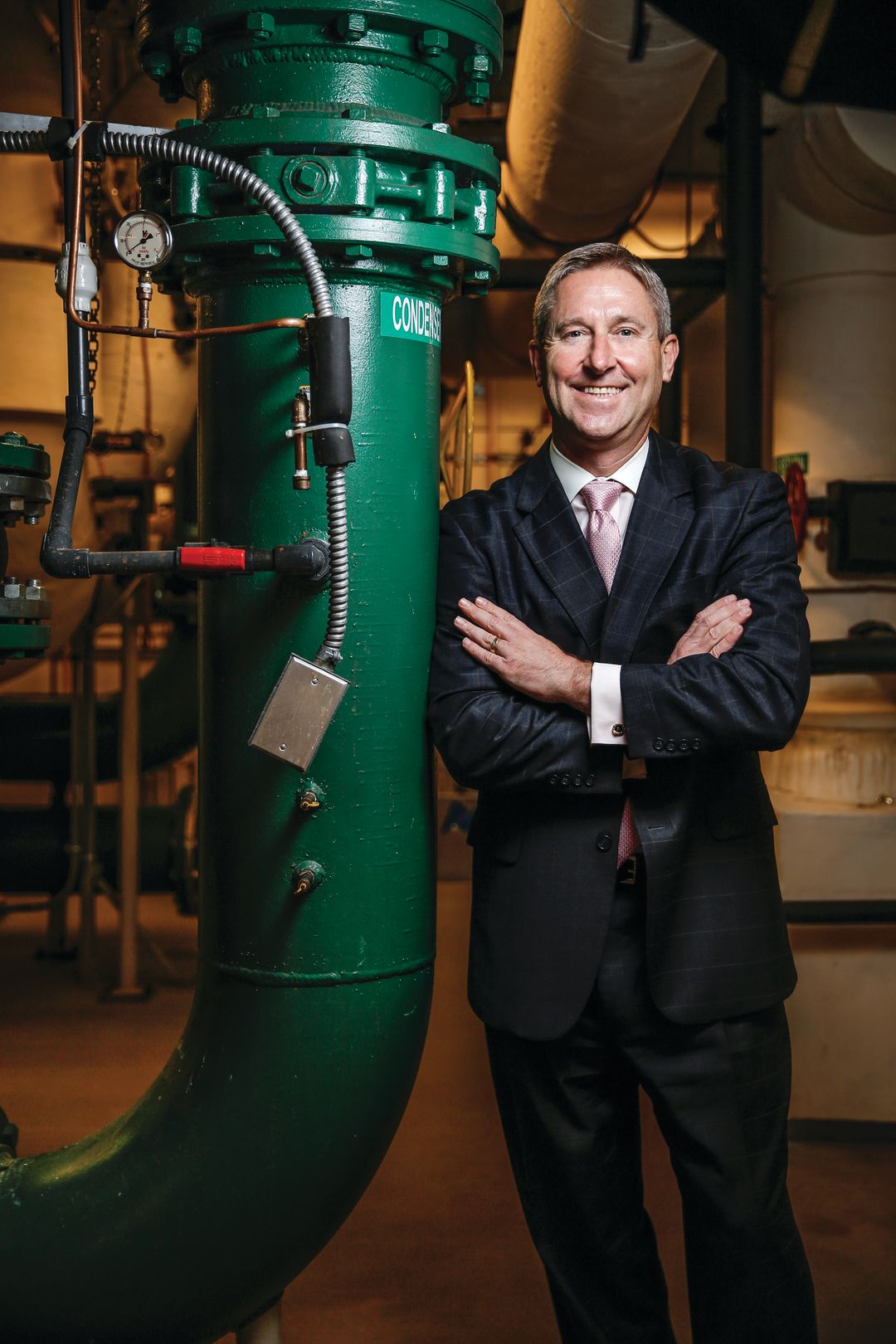
FCCI CEO Craig Johnson
Professional Offices Winner: FCCI Insurance Group
Data centers suck enormous amounts of power, so FCCI’s investment in server consolidation makes the commercial property and casualty insurance company stand out. It’s also paid off for the company. Improving data center efficiency through network storage and virtualization has lowered energy costs and improved reliability.
FCCI posts an “Eye on Sustainability” flyer on its website that details other green practices. Demand flow control in the 280,000-square-foot Sarasota headquarters has cut HVAC energy consumption by 20 to 30 percent. Branch offices in 18 other states usually lease space, but recycling, buying from eco-minded vendors, video conferencing to reduce travel and encouraging customers to forgo paper documents in favor of electronic access make FCCI a national model of good corporate practices. FCCI doesn’t have to think green. It chooses to.
“It’s part of our long-term focus and careful growth plan, related both to insurance and the environment,” says company spokesperson Melanie Reda. “We try to do the right thing in as many ways as possible.” No single initiative is so unusual, but taken together, they add up to a greater whole. “We just do all the things that other businesses should be doing,” Reda says.
She credits FCCI's sustainability ethos for some of the national accolades it receives as one of the best companies to work for. “Employees feel empowered by working for a company that has its priorities in the right place,” she says.
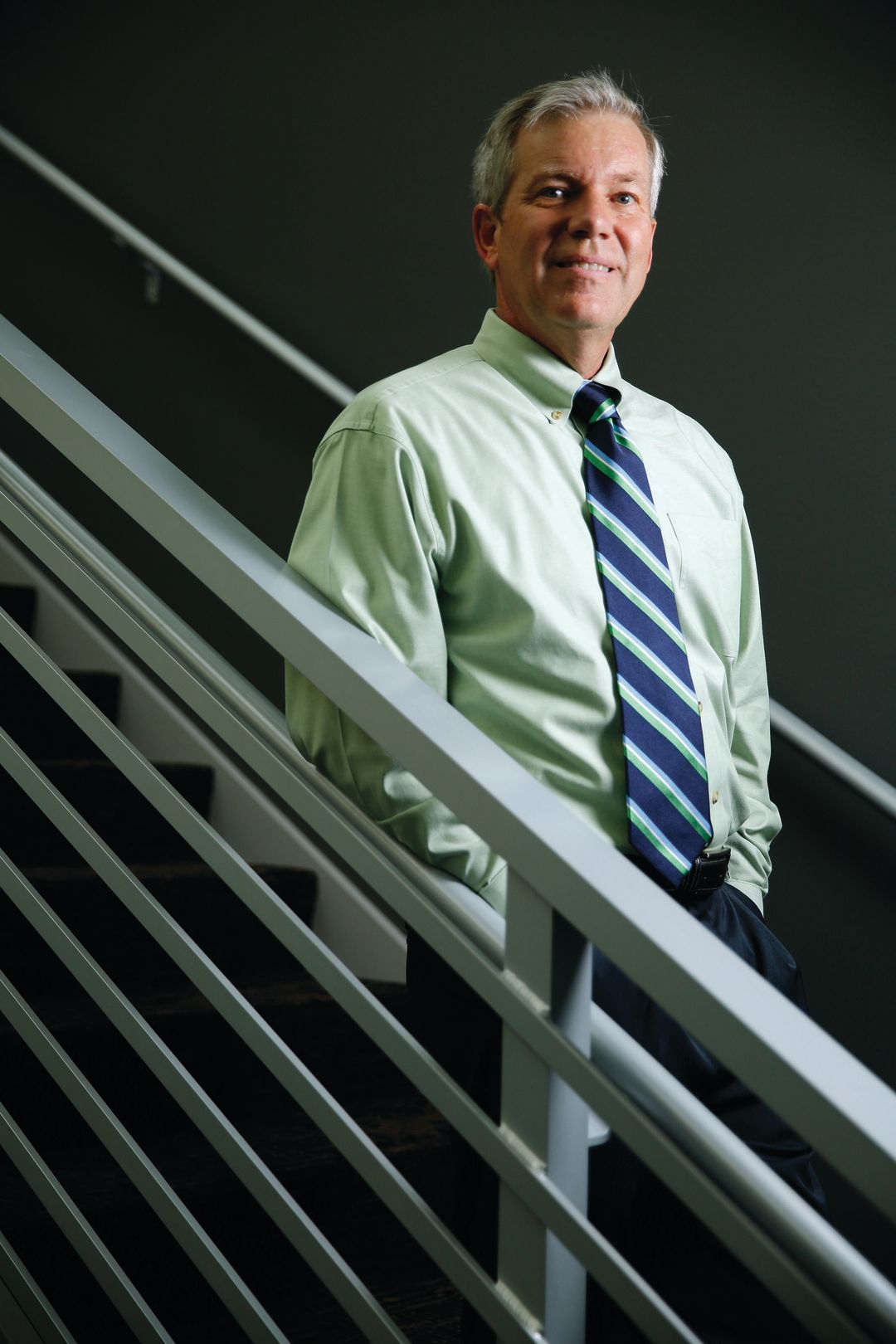
David Sessions, CEO, Willis A. Smith Construction
Building Winner: Willis A. Smith Construction
About eight years ago, Willis A. Smith Construction built a new, 18,000-square-foot headquarters. It was right at the start of the recession, not exactly the perfect time to expand.
But the Willis Smith team also wanted to build to the U.S. Green Building Council’s LEED Gold standard—an unheard of ambition for a big construction company, even in boom times.
Willis Smith achieved its goal, and since then has been a model in the region for just about every facet of its headquarters. The company not only showcases the potential of sustainable construction, but it also encourages clients to consider incorporating sustainable features, even small ones, into their own projects.
“It was practical, good design,” says president and CEO David Sessions. “In seven years, we have gotten our money back.”
Willis Smith’s solar system, which produces 69,500-kilowatt hours per year, has paid off. The company’s energy use is now net zero, meaning the company produces as much energy as it consumes.
Its water use system is just as impressive. The company uses reclaimed water for irrigation, potable water for coffee and sinks, and harvests rainwater from the roof in two, 3,000-gallon underground cisterns for flushing toilets. “Just one inch of rainfall completely fills our two cisterns with a 60-day supply,” he says.
The company also recycled much of its waste during construction, uses low-emission glass and insulated windows, incorporated recycled materials and low-VOC paint, carpeting, glue and manufactured wood products inside.
“If you have a choice to be in a healthy environment and you could minimize your cost over the lifetime of a building, why wouldn’t you?,” asks Sessions. “You get a return forever.”—Susan Burns
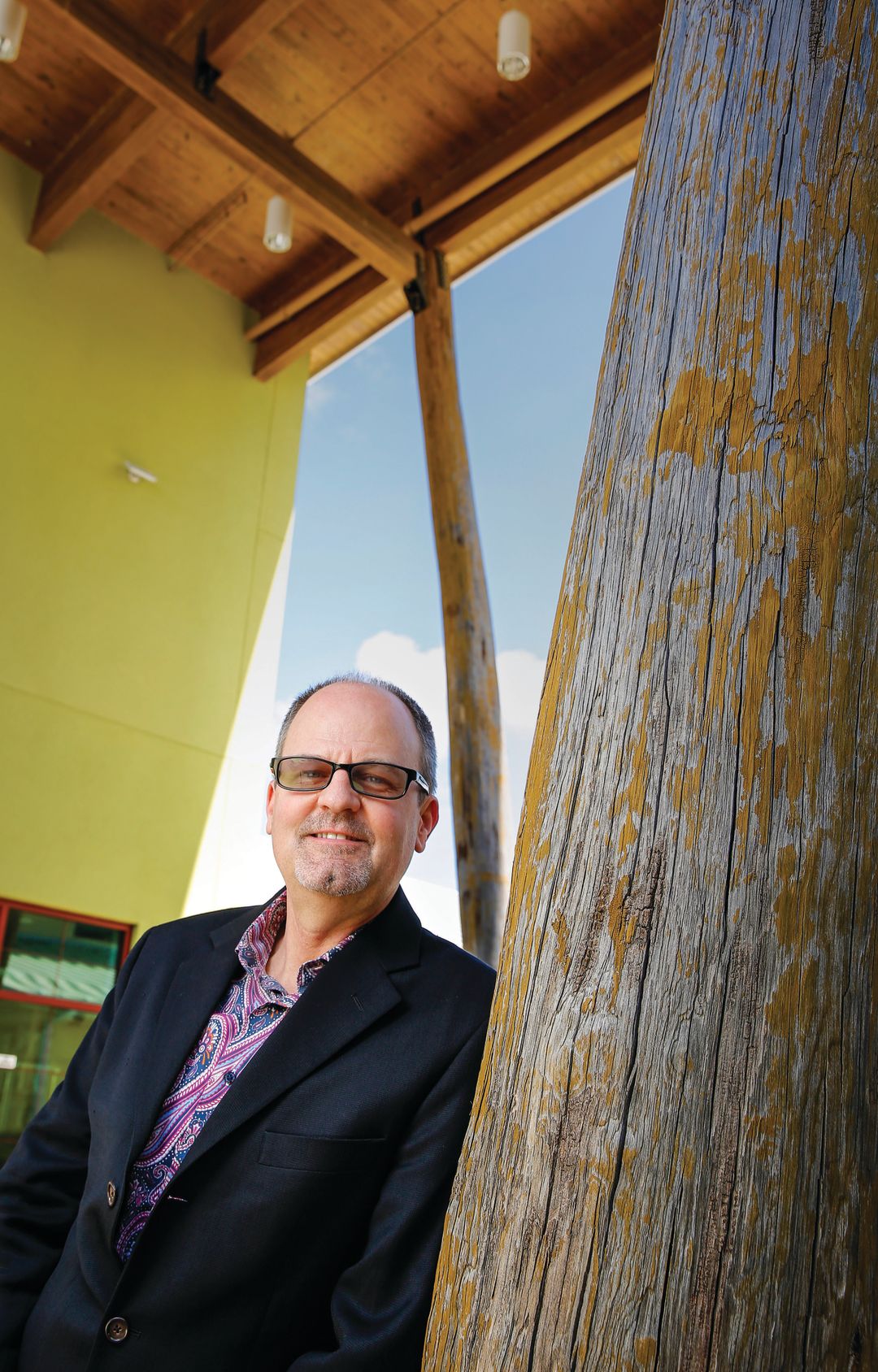
Architect Michael Carlson
Design Winner: Carlson Studio Architecture
Sarasota architect Michael Carlson began thinking about sustainable design as a student at Ball State University in 1984. At the time, there was no market for design that incorporated energy use and conservation, or the belief that structures should consider the impact on future generations. But for Carlson this type of architectural design was logical and exciting.
Carlson designed Sarasota County’s first green building at Twin Lakes Park in 2000 and helped put the county on the map for progressive policies. He designed the award-winning 2009 HGTV-featured LEED Platinum home in Port St. Lucie, the LEED Gold-certified Sun-N-Fun resort’s lifestyle center and the LEED-certified Gateway Bank of Southwest Florida. He’s proudest of the LEED Gold-certified Center for Building Hope. “The goal was to build a facility that inspired hope and the merging of all things sustainable: energy, water conservation, healthy interiors. It’s a warm, inviting, peaceful space,” he says.
And Carlson’s own office is a model in sustainable urban design. He took a small former grocery store from the 1930s and converted it into a LEED-certified home for his business. A new HVAC system, a new roof, an improved building envelope, low-flow plumbing fixtures and motion sensors, and Energy Star appliances, energy-efficient lighting and a compressed four-day work week is saving thousands in annual energy and water bills.
But what he’s most excited about right now is his involvement with Florida’s U.S. Green Building Coalition. “I’ve been appointed by the state board for USGBC in Florida to do strategic planning for sustainability statewide. I really want to raise people’s consciousness about climate change,” he says. —Susan Burns
Nonprofit Winner: Jefferson Center
Affordable senior housing and sustainability don’t often go together, especially when the apartment tower in question is almost a half-century old. Repairing and retrofitting an old building usually costs more than starting from scratch. Yet without breaking its modest budget, Sarasota’s nonprofit Jefferson Center, on North Tamiami Trail, has managed to make its 209 units green.
Sarasota’s Unitarian Universalist Church helped shepherd the center into existence, and in 1968 the first residents moved in. The aging tower receives no subsidies. Yet through vigorous grant writing and careful stewardship, the Jefferson Center has installed a reflective roof and revamped the HVAC system that paid for itself in five years. Thanks to a HUD Community Development Block Grant, the Jefferson Center accomplished its most ambitious project: installing 435 hurricane impact windows with low-e (low-emissivity) tinted glass.
“With all the drilling and sealing and mixing concrete, it feels like we’re in a dentist’s office sometimes,” says administrator and grant writer in-chief Dawn Lucido.
Lucido involves residents in conservation right from orientation, when she distributes free LED bulbs and reusable grocery bags donated by Publix. Monthly roundtables and newsletters inform about low-flow toilets, Energy Star appliances and micro-irrigation on the five-acre grounds. Energy and water conservation have kept rent increases low (1 percent last year), and there’s a one-year waiting list to move in.
Recently workers splashed several swatches of low-VOC (volatile organic chemical) paint on the building so that residents could vote on the color. Painting the renewed Jefferson Center will be “the frosting on the cake,” Lucido says.

